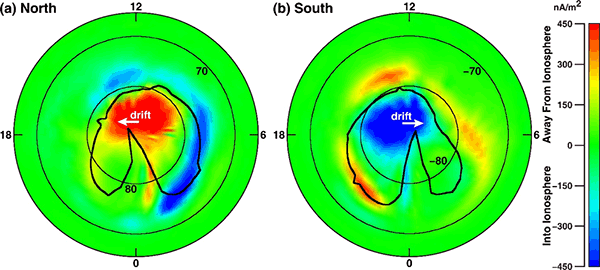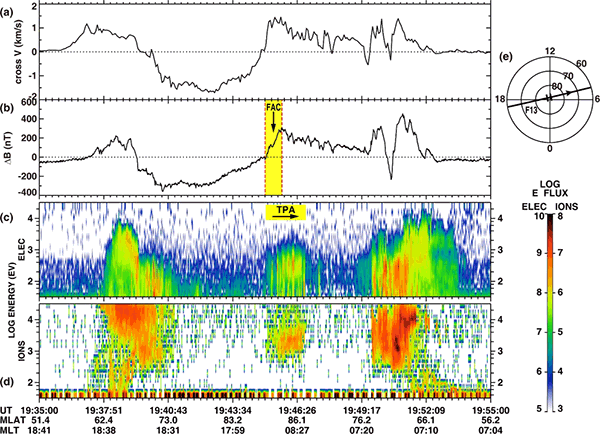
HOME / Departments / Earth and Planetary Sciences / Solar-Terrestrial Physics
Solar-Terrestrial Physics
-
- WATANABE Masakazu, Associate Professor
- Solar-terrestrial physics deals with physical phenomena in geospace caused by electromagnetic waves and interplanetary disturbances radiated from the Sun. Its target area is vast ranging from the Earth’s upper atmosphere to interplanetary space and beyond. Our laboratory mainly concerns global plasma dynamics in the solar wind–magnetosphere–ionosphere system and interaction processes between each plasma regime. Research subjects include electric current systems, plasma convection, magnetospheric substorms, magnetospheric dynamos, and magnetic field topology of the magnetosphere. Our approach is integration of observational data analysis and quantitative numerical modeling. The modeling is based on a global magnetohydrodynamic simulation code designed to reproduce ionospheric phenomena with high spatial resolution. We are mostly interested in the polar ionospheres because they serve as a window for global diagnosis of the magnetosphere.
Let us present one good example showing the importance of integrating observations and numerical modeling. The theta aurora for northward interplanetary magnetic field (IMF) is an auroral form that consists of the nominal anulus of auroral luminosity (auroral oval) and the transpolar arc that extends from the nightside auroral oval to the dayside auroral oval. One mechanism triggering the theta aurora formation is a stepwise switching in the dawn-dusk component (BY) of the IMF, although the occurrence of this IMF BY trigger is known to be infrequent. Global magnetohydrodynamic (MHD) simulations can reproduce this theta aurora formation. Figure 1 shows an example of a numerically simulated theta aurora configuration when the IMF BY changed from dawnward to duskward. The protruded open-closed field line boundary on the nightside represents the transpolar arc. The transpolar arc is drifting duskward in the Northern Hemisphere and drifting dawnward in the Southern Hemisphere. The dawn-dusk relation reverses when the IMF BY switches from duskward to dawnward. Color contours in Fig. 1 represent electric currents flowing along the magnetic field. One sees field-aligned currents on the trailing side of the drifting transpolar arc. They flow away from the ionosphere for duskward drifting transpolar arc and flow into the ionosphere for dawnward drifting transpolar arc. This is a new finding of our simulation study. Observation of the transpolar arc-associated field-aligned current system in Fig. 1 has never been reported previously. Does this mean that the simulation results in Fig. 1 are artifact of numerical modeling? Observational verification is required.

We systematically surveyed idealized IMF BY switch events from year 1998 to 2004, and all we could find were only four events. Thus, idealized stepwise IMF BY change for northward IMF is of very rare occurrence. For the four events, data from five overpasses by low-altitude satellites were available. We confirmed the presence of the field-aligned current system in Fig. 1 for all five satellite overpasses. We here show one example of such observation. Figure 2 shows satellite observations of (a) horizontal ion drifts (positive sunward), (b) horizontal magnetic field disturbances (positive antisunward), (c) precipitating electrons, and (d) precipitating ions. The satellite orbit is shown in Fig. 2e. The IMF BY changed from duskward to dawnward in this case, so the overall pattern is expected to match Fig. 1b. The region of plasma sheet-like precipitation in the middle of Fig. 2c and 2d represents the transpolar arc. On the trailing side of the dawnward drifting transpolar arc, one sees in Fig. 2b a magnetic field disturbance consistent with field-aligned currents flowing into the ionosphere. The field-aligned current system is not intense nor isolated, so one can easily overlook the current system unless the picture from Fig. 1 is kept in mind. Therefore, numerical modeling and observations are indissociable in this study. In this way, we are advancing our research by combining simulations and observations.
